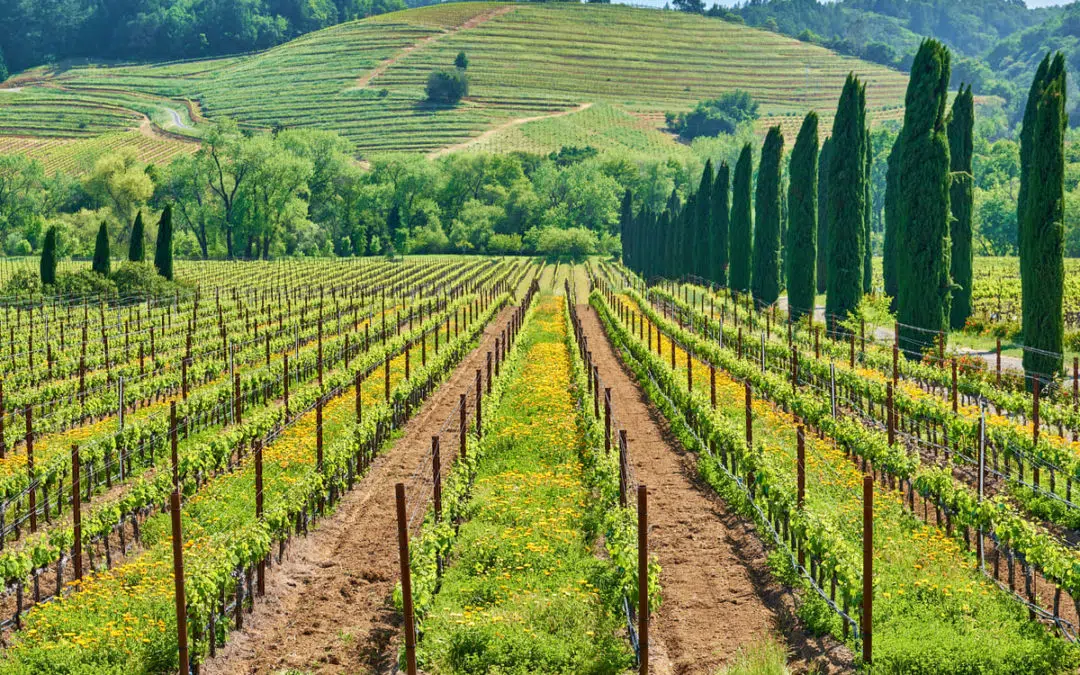Have you ever heard a winemaker or shop owner say a bottle of premium wine is unique thanks to its high-elevation vineyard site? If so, did they explain why that was so?
From small lot wines to luxury estate releases, there’s a definite difference between wines whose grapes are grown in the valley and those grown on hillsides. For instance, intense wine flavors develop in vineyards where vines “struggle.” Here’s a look at how altitude is a critical and distinguishing factor in many vineyards—and the wines they produce.
How Elevation Affects Grapes
On most April days, sea level California vineyards are bathed in 70-degree sunshine, while hillside vineyards just 2,000 feet above are lucky to reach 50 degrees. Head even higher to 4,000 and 7,000 feet, and it’s a blizzard! Dramatic is clearly an understatement when describing the climatic differences between California wine country’s fertile valleys and its foothills.
Valley floor and hillside vineyards differ in three critical ways, with mountain locations:
- Receiving more direct and concentrated sunlight.
- Experiencing dramatic temperature shifts.
- Having exceptional drainage.
These factors typically leave hillside vines struggling to survive. To understand what happens to hillside grapes, think about how sunburned skiers get at higher elevations. Grapes exposed to more intense sunlight produce a darker pigmentation, just like people get tanned. This “tan” that high-altitude grapes develop results in a thicker, tougher grape skin which, in turn, results in a vibrant color and strong tannin.
As to taste, the major difference between valley floor and hillside wines comes down to concentration of flavor and aroma.
Napa Valley Floor Grape Production
Napa Valley may be one of the world’s smallest wine regions (only four percent of California’s wine grape harvest comes from here), but it’s also one of the most diverse. Many vineyards here have a mixture of soils that promote diversity in the area’s wine production. For instance, those with a high gravel content are well-drained, making them ideal for Cabernet Sauvignon. Those with richer soil are best suited to varietals and whites like Chardonnay.
In the end, great wines can be produced on the valley floor and in the hills. Napa Valley’s unique vineyard landscape is prized for its great richness, geological variety, and soil types, all of which affect viticulture. Experienced growers know physical features and biological factors dramatically influence wine’s structure and flavor, so they consider all a site’s characteristics when planting vineyards. Their commitment to excellence has endured for generations, earning them a well-deserved international reputation for fine wines.
Come Experience Our Napa Valley Premium Wines
Though harvest season is one of the most popular times to visit Napa Valley, November is when winemakers introduce their new releases, including some of the region’s most coveted wines. If you’re planning a November visit to Napa, be sure to make a visit to Strala a part of your plans. Our informative wine tasting experiences allow you to learn more about our small lot wines in a more intimate atmosphere compared to busier times of the year. We can’t wait to welcome you!

